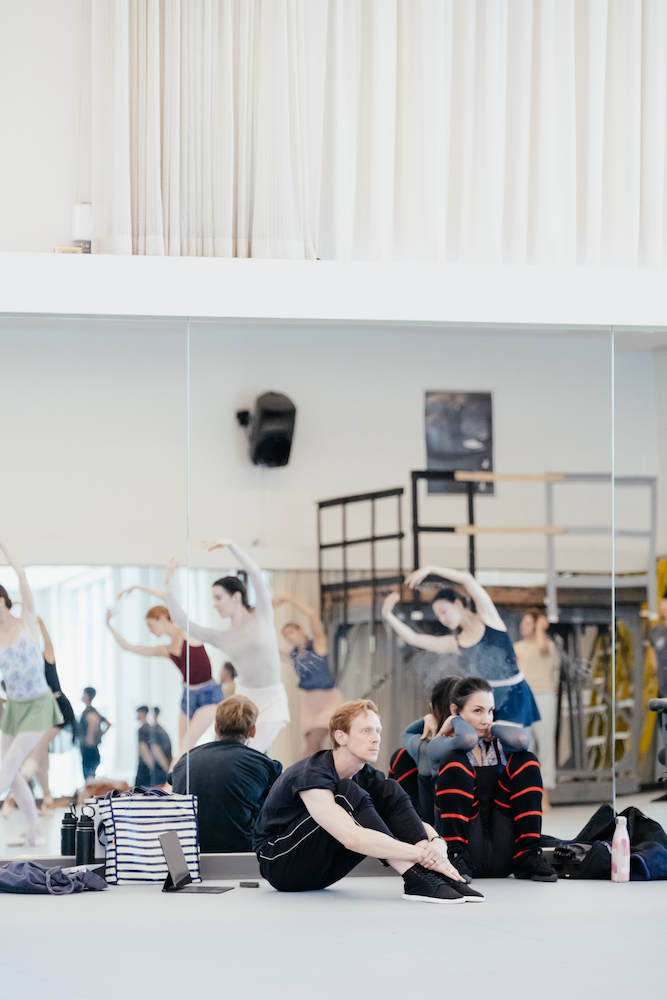Edward Watson on Song of the Earth
A Deep Dive into the British Masterpiece
Edward Watson was a globally celebrated dancer and the longest-serving Principal at the Royal Ballet where he won an Olivier Award for Outstanding Achievement in Dance, Prix Benois de la Danse, and was awarded an MBE in 2015 for his services to dance. He is a répétiteur and stages works by Sir Kenneth MacMillan across the globe. Watson was in our studios in September setting Song of the Earth, which will have its SF Ballet premiere in our British Icons program in February 2024.
SAN FRANCISCO BALLET: TELL US A BIT ABOUT THE CREATOR OF SONG OF THE EARTH, SIR KENNETH MACMILLAN.
EDWARD WATSON: I think MacMillan’s work is incredibly varied in terms of subject and music and storytelling and actual choreographic steps. But somehow you always know it’s him. You always know his sort of musical phrasing and dramatic intent. Even in his plotless works, some of which are sort of abstract, there’s always so much more behind them. His work constantly reveals itself as inventive, even some of the pieces that were made in the 1960s. It still seems you can find things in there that are unusual or surprising that you haven’t seen before and make you feel something.
SFB: HOW DOES MACMILLAN FIT INTO THE BRITISH STYLE?
WATSON: When people talk about the British style, I think the first they think of is Frederick Ashton, but Macmillan is as British as Ashton, he’s just coming from very different angles. But he is absolutely the backbone of the British style.
SFB: WHAT CAN THE AUDIENCE EXPECT THROUGH SONG OF THE EARTH’S VARIOUS STAGES?
WATSON: MacMillan described it really simply as “a man, a woman, and death.” Throughout the ballet, you sort of watch the woman through the cycle of her life.
The [words to the] first song, which is all men, is speaking of the sorrow of the earth, this sort of misery of the earth, and this sort of anger and everything that’s sort of fired up in that. And then the second song, which is the woman’s first entrance, her first song is autumn and loneliness and solitude and the fading of color and things and that phase in life.
And then you sort of get almost a look back at youth, at beauty, at fun, and drinking. And then in the last song, there’s some amazing moments where you see the dances that have represented each of those moments of life sort of leave the woman and she’s left alone just with the man who’s been taken by death.
So it sort of tells a story of her life in a way, but not what happens along the way. You just get moments of stages of life, I guess. This is what we all experience at some point in our life.
SFB: CAN YOU TELL US ABOUT THE MUSIC, GUSTAV MAHLER’S ORCHESTRAL SONG CYCLE FOR TWO VOICES, DAS LIED VON DER ERDE?
WATSON: The music by Mahler is written for two singers and an orchestra with the singers onstage with the dancers. The words are based on ancient Chinese poems speaking of loneliness, beauty, youth, and drinking. And so it’s quite a fascinating watch when, you know, you have German music, Chinese words, and British dancing. Somehow there’s no specific nationality to any of it. You get involved in this sort of beauty and brilliance of all of its aspects.
The music is incredible to dance to. I think it’s probably my number one experience of being on the stage and having just been surrounded by that sound. With the voice and the orchestra, the sound sort of goes on forever. It feels like it fills you. You breathe it in and you dance it out in a way. It’s completely inspiring in an unexpected way.
SFB: DO YOU HAVE A FAVORITE MACMILLAN BALLET, OR IS THAT AN IMPOSSIBLE QUESTION?
WATSON: I think my favorite ballet was always whichever one I was working on at the time. I’m not just saying this because we’re talking about it, but I think Song of the Earth is really a favorite of mine for what it means, what it represents, how it looks, the experience I had dancing it, the experience I always have watching it, and particularly this experience of passing on what was passed on to me feels very important.









